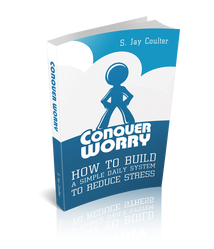|
As a little girl, I was a worrier. I worried about silly things like spiders in my bed, aliens living next door, whether my friends liked me, and what to wear to school. As I grew, so did my worries. Boyfriends and jobs, teachers and classes, filled my thoughts, the normal concerns of any young girl. But there were other worries that consumed me, like a brother who ran away, and another who clung to me when parents fought. I worried about our parents, and whether their worries would tear them apart. I worried myself into teenage anorexia, which became my coping mechanism for dealing with stress. As a teen, I was expected to fit in, eat with my friends, and munch on snacks all day long, which made me eventually give up anorexia, and worry about my weight. Every time I thought about my weight, I exercised, twirled my hair, fidgeted in my chair, and clicked my fingers, my new ways of dealing with anxiety. Photo by mojzagrebinfo via Pixabay I worried so much, I was often sick, sometimes for a month at a time. I missed school, and wondered if I’d get my work done, or even pass my grade. I worried about the flu and colds I often developed, unexplained fevers, and sores that covered the inside of my mouth. By adulthood, I was a flustered, stressed-out, overthinking mess. Only by now, I was getting better at hiding my worries. I hid them behind too much work and fussing constantly in my home. I disguised my worries in sleepless nights. No one, not my children, parents, or husband, knew the constant brooding in my head. I guess you could say, in some strange way, I had control over my worries. Only I didn’t. A few years ago, they all came tumbling out. As my husband and I sat in our car, waiting to turn into a tiny fruit stand, another vehicle rammed into us. I don’t remember the crush of metal against metal, or my brain being flung from one side of my skull to another. What I do remember is standing on the side of the road after the accident, and panicking. Heart-thumping, body-shaking, sweat-dripping, panic. In one brief second, the only control I’d ever had over my worries, was gone, and there was nothing I could do. And to this day, I still have problems controlling my panic. Photo by Alexas_Fotos via Pixabay Recently, a string of events, some unforeseen, some planned, sent me over the proverbial edge. In less than two months, three sets of guests stayed overnight, my husband lost one job and gained another, we went on an out-of-state trip, I was called to jury duty, and I experienced a health scare. To top it off, my children were experiencing their own sets of problems, and though they are adults, I still worried. I worried about everyone those few months: My guests, whether they were happy, comfortable, and having fun; my husband, his old job, his new job, his salary, his benefits. I worried about my children, and their futures. I even found time to worry about a brother who was moving away. It wasn’t unusual for me to worry, but now, my worries were different. I no longer knew how to control them. I no longer knew how to hide behind daily activities. Those two months were filled with a shaking body, constant tears, and a temper that flared for no reason. When it was over, I’d fall in bed, confused, and exhausted beyond belief. Other things had changed in me as well. Worry wasn’t just a part of my life, it consumed me. So much, I’d forget to eat, nap, and exercise. In other words, I’d forget about me. It wasn’t until I received the envelope from the courthouse that I began to figure it out. I knew what it was before I opened it. With shaking hands, I read the neatly printed words on the page, and began to cry. “What is it?” asked my husband. “I have jury duty.” Thoughts raced through my mind. How could I sit in a stuffy courtroom, next to people I didn’t know? What if I didn’t understand what was being said? What if I got tired or needed to eat? Instead of thinking it through, I worried about every scenario. “I can’t do it,” I cried. My husband took me in his arms. “You were called to jury duty a few years ago,” he said. “Your doctor wrote a letter. Call her tomorrow. I’m sure she’ll write another one.” She did. But until I had that final notice in my hand, the one that said I wasn’t required to show up for jury duty, I was a freaked-out, stressed, worried mess. Unfortunately, I had one more thing to worry about. The next week, I received a call from a medical specialist I had recently seen. “We found something on your tests. You need a biopsy,” she said. I hung up the phone, and began to sob. I cried until every muscle ached and my mind reeled with tons of thoughts and emotions. I was convinced life was over, that I’d never celebrate another Christmas, never see another birthday. I was saddened by a family I’d lose, one that I’d no longer be there for, one I wouldn’t see grow and change. By the time I went to the doctor, I was falling apart. Every crease in my face accentuated, every muscle tensed, every word shook as I spoke. A nurse was brought in to hold my hand during my biopsy. As I look back now, I am truly embarrassed by the way I acted. It’s true, it was a stressful time. It would have been stressful for anyone. But I wonder if others would have reacted the way I did. I’ve tried to gain control of my emotions, my worries, my life, but I’m not certain I can. It is a part of who I am, a flaw I am learning to live with. But I know this, I will never quit trying. If anything good has come from my emotional traumas, it is this: My marriage is stronger, for I no longer hide behind flaws. Each flaw is beautifully displayed, for my husband, and all the world, to see; I am stronger. I am learning every day to accept who I am; and most importantly, I am learning to take care of me. About the Author
0 Comments
In this podcast the sister of the murdered Nicole Brown Simpson comes on to discuss her life and how she builds her mental resilience. We also talk about O.J. Simpson, their kids as well as her new book.
Connect with Tanya: www.TanyaBrown.net
From Tanya's Website:
Get real with Tanya: Moving past the adversity in your life.Tanya Brown is no stranger to adversity or trauma. Faced with near overwhelming life challenges, Tanya used obstacles in her path to ultimately improve the quality of her life. She takes her life experience to audiences nationwide as a compelling motivational speaker, and she brings that experience to bear on her coaching practice. Her story makes it clear that you can overcome any adversity with the willingness to ask for help. Tanya’s Story of Loss, Grief, Depression . . . and VictoryThe death of her sister Nicole Brown Simpson, which was sensationalized in the 1994 media frenzy featuring Nicole’s husband O.J. Simpson, unleashed a flood of issues for Tanya. Prior to Nicole’s murder, Tanya had lost several other loved ones, and emotional trauma was setting in. She engaged in dysfunctional eating patterns, and she busied herself with academic work as diversions from the mounting depression. Finally, in 2004, she suffered a breakdown that actually saved her life. She worked for three months to get back on her feet with tools for managing her emotional well-being. Today, she is a celebrity author, a voice against domestic violence, and a motivational speaker and Life Coach who helps others bounce back from adversity. Read Tanya’s Books to Cultivate Coping SkillsTanya has written two books to help readers overcome difficult, traumatic situations. In her revealing and thought-provoking memoir, Finding Peace Amid the Chaos: My Escape from Depression and Suicide, she shares her journey of self-discovery and shows how even the most severely traumatizing life experiences can carry lessons that teach new ways of being. In her second book with Carolyn Inman, Tanya writes about The Seven Characters of Abuse: Domestic Violence, Where It Starts and Where It Can End to help people identify domestic violence. In this break-through book, she includes her own personal stories and diary entries from her late sister, Nicole. These life-changing books are a great way to get started on your journey with Tanya. “Finding Peace Amid the Chaos provides the reader with heart-felt stories and solutions for dealing with major life challenges and daily challenges. When you apply the lessons and strategies woven throughout the chapters, you will experience more peace of mind and calmness when life throws a curve ball." -Dr. John Spencer Ellis, Executive Producer, TheCompass, Founder, Wexford University Guest Post by Two Wise Chicks Post Design by Christy Zigweid Photo by Unsplash via Pixabay made using @WordSwagApp If Christmas is in your life, then you will be very familiar with the idea of writing a letter to the big bearded guy. Can you believe it's writing-to-Santa-time again - already?! Typically, young kids' letters are checklists of 'wants', along with parent-nudged-politeness like "Dear Santa, hope you are well and have had a good year", or "I hope Mrs. Claus is well" and, ideally, a "thanks so much for last year's gift I LOVE it! :)" With age and awareness these letters get more personal, and can sometimes include emotional pleas ("climate stabilisation, a different US president") and other more heart-wrenching requests ("please help my gran/brother/aunt/dad get better") These are the things that, unfortunately, Santa can't control. For if he could, I'm certain he would fix all of these things for us... We often can't remember what age we stopped writing letters to Santa. Or why. Perhaps it felt just too 'childish' at some point? Some adults still write them, and beautifully. They'll start popping up on social media around now; moving masterpieces of human desire and hopes, things of beauty. These adults who write to Santa write because they believe that if you don't believe that you can receive, you don't receive. If we don't believe, we don't receive. It seems almost too simple. Can we make ourselves believe (in) something? 'Belief' is something about which we are passionate. Professional and personal experience keeps teaching us that our beliefs about ourselves dictate our behaviours. Ponder this: if I believe I am worthy, I act in ways that reflect that (without having to think a lot about it). If I believe I am not worthy, then I also act in ways that reflect that (especially if I am not thinking a lot about it). Beliefs don't stop at "I am worthy" (although, truth be told, this might be one of the most encompassing and important for most). There are hundreds, maybe thousands of beliefs that inform our lives on a daily basis. Some of the ones that feature in therapy and have wide-and-long reaching effects on a person's day-to-day life include:
Do any of these resonate with you? Can we change what we believe about ourselves? Yes we can, with awareness and practice. It means choosing to think and act in ways that align with what you would rather believe about yourself. And doing that over and over. And over. Repeating these (more) healthy thoughts and actions until you don't have to think about it so much. Until it becomes a habit. Your new habit. Until you believe 'it' about yourself. And when we believe these things, we receive "more". More respect, better relationships, better health. How? Possibly the most important step, is first identifying which core belief we have about ourselves is the one we want to change. That can be the hardest part. Once we know what it is (and come to terms with the fact), we can work on how to change it. There are plenty of resources out there for us to work with (friends, books, workshops, counsellors, therapists). It is healing and empowering to realise that our beliefs about ourselves can limit our happiness - we cannot fix what we don't acknowledge. So in a very real sense, knowledge is power. Your letter to Santa: So, what about taking a little time this week to write your own letter to Santa? And ask for something that money can't buy, but could be absolutely life-changing? In that letter, write what you would really like to believe about yourself this year (and always). Write about how you would like to know how to overcome the belief that holds you back. That belief that stops you from being fully present, aware, focused, connected, even vulnerable. There is no 'right' way to write your letter. Simply write from the heart, write what you feel (even if it doesn't make 'sense'). Writing is a time-honoured addition to successful therapy, and the beauty of it is that it works in the comfort of your own home, with any old piece of paper or pencil or pen you have. It even works on a keyboard - and it's FREE! Which is always nice... To help you along the way we've put up a template here. It'll only take a few minutes to print out and fill in, and it might be one of the nicest gifts you've ever given yourself - plus it literally won't cost you anything!!! Mind you until the next time, and may Santa (may you) be kind generous to you. About the Authors Sally O’Reilly
Sally wants to help create a world of compassion for ourselves and others. A world where mistakes are allowed, gender roles don’t exist, sex ed in schools is a real thing and everyone dances – lovely! As a psychologist and psychotherapist in Ireland, she’s worked for nearly twenty years in private practice, with adults and trainee adults of all ages. She blogs on her own website, is a feature writer for super duper parenting website Voiceboks.com, does print and radio media work and has been known to Tweet. She’s the one running our Twitter page! When she’s not working, you will find her engrossed in Science Fiction or some dark and Danish TV show, listening to music, watching the sea (while really, really wishing it were warmer), or figuring out how to work Lightroom on her Mac. All while munching on Bombay mix. #multitasker! She’s happiest when dancing and erm…. her cat has his own Facebook page. We won’t link to that, it’s too embarrassing.. Tanya Tinney Tanya looks forward to living in a world where people know their worth, respect boundaries, and always have time for tea and chocolate. A magic bubble that protects her from sticky fingers, hormonal girls and dog hair would be awesome as well. Her education and much of her training is in the areas of psychology and human potential. She worked as a licensed psychologist for over 14 years, with 10 of those years spent building her own successful private practice. In total, she has over 20 years of varied experience working, volunteering for non-profit agencies, and consulting to small business. Most recently she has launched her dream online coaching practice where she gets to work with motivated, amazing women who need help overcoming life’s hurdles. Exciting times! She has lived in Ireland, Ethiopia (okay, just 6 months), Canada, and currently lives in central Texas with her husband, three girls (including fraternal twins), two dogs and three cats. When she’s not finding ‘everyday moments’ to write about here or on her own blog, you can find her being walked by her dogs, unearthing unidentifiable food-objects under the couch cushions or baking her famous banana bread. Tanya runs our Facebook page – and not to be outdone by Sally’s cat, her dog has its own Facebook page too. Guest Post by Irving Schattner Edit and Post Design by Christy Zigweid Photo by Antranias via Pixabay made using @WordSwagApp Long-term relationships and marriage require your work, attention, and ability to grow through challenges. Oftentimes couples stay stuck in problematic patterns and are unable to grow together. Drawing from my experience in working with couples, whether married or cohabitating, I’ve identified some reasons why these relationships fail to thrive and ultimately unravel. While this list is not exhaustive, identifying with any of these 7 indicators should give one pause and call forth the need for some sort of intervention. Poor communication Couples who refuse to listen to one another’s needs, desires and life goals, talk over one another, are embroiled in conflict, hostility, blame and /or defensiveness, are basically waging war with the enemy rather than constructively and lovingly engaging with the person who should be their best friend. Couples want to feel safe, cared for, and loved rather than feeling they are embroiled in a war zone. The need of one or more partners to be “right” leads to a judgmental attitude and anger which derail communication and, therefore, problem solving. Conflict avoidance leads to emotional and physical disconnect. Unsuccessful attempts at engagement result in one or more partners giving up and withdrawing. As disengagement intensifies, the relationship is at impasse and requires outside help to re-engage. Addictions and other maladaptive behaviors Addictions and other compulsive and maladaptive behaviors lead to lies and deceit, betrayal, and erosion of trust, hurt and pain. Attempts to placate or pacify the addict lead to denial and co-dependence by the non-using partner who, in effect, becomes part of the problem rather than the solution by bailing out the addicted partner and, consequently, sustaining the addiction. The addiction must be addressed through treatment, as well as support for the non-abusing partner. Laziness and other character flaws Love is based on mutual trust and respect. Lies and deceit, disloyalty, unwillingness to help out their partner, or withdrawal from or avoidance of financial, social, and household responsibilities, shift the burden onto their partner. What should be a partnership of equals feels more like an unbalanced parent / child relationship. Poor boundaries Stepping outside of the relationship to satisfy fantasies and unresolved needs and desires can lead to disengagement from one’s partner and eventual dissolution of one’s primary relationship. It’s important for couples to share their needs, desires, and fantasies with one another rather than an outsider. Once boundaries are crossed, it’s difficult if not impossible to repair the damage and hurt inflicted on one’s relationship. While some partners are willing to work on damage control and repair, for others the hurt and distrust caused by “stepping out” can never be reconciled and are beyond repair. Disrespect A healthy relationship depends on acceptance, appreciation, admiration, and feeling emotionally secure. Hurt and anger undermine the relationship when differences of opinion turn into contempt, criticism, lack of respect, and minimizing or discrediting your partner’s thoughts or feelings. When one or both partners feel mistreated or unfairly judged, there is a tendency to retaliate in kind or withdraw and not share one’s thoughts and ideas. Showing love to one’s partner under these conditions is often difficult. Aggression or explosive outbursts Expressing one’s anger in a constructive way can lead to healthy problem solving. However, when practiced aggressively or with rage, it can invoke fear and avoidance, which undermine constructive communication and can lead to serious physical and emotional abuse. When this occurs, the implicit expectation of safety, security, and trust in the relationship is seriously undermined as things spiral out of control. Together yet apart While it is healthy and realistic to have interests outside of one’s relationship, preferring the solitude of one’s company or the company of others at the expense of sharing activities and free time with one’s partner is a strong indicator of a problematic relationship. Failure to address the emotional and physical needs of one’s partner through shared interests and pursuits, can lead to disengagement from one’s partner and ultimately dissolution of the relationship. About the Author - Irving Schattner, LCSW
Seven year old Lucy comes on the Conquer Worry Podcast to share her 'Life Lessons.' These lessons work if you are 7 or 77 years old! Lucy's Original ListGuest Post by Irving Schattner Edit and Post Design by Christy Zigweid Photo by PublicDomainPictures via Pixabay made using @WordSwagApp What is Panic Disorder? According to the Anxiety and Depression Association of America, “panic disorder is diagnosed in people who experience spontaneous, seemingly out of the blue attacks and are preoccupied with the fear of a reoccurring attack. Panic attacks occur unexpectedly, sometimes even during sleep.” The fear that is felt during a panic attack can last several minutes and is usually unexpected. Most people are visibly distraught after an attack occurs and fear the re-occurrence of another panic attack. Some are so severe that they can be mistaken for a heart attack, leading one to check into a hospital emergency room in hope of finding a physical explanation. Most typically, the patient is administered an anti-anxiety medication by ER staff and told there is nothing physically wrong–that they are suffering from anxiety or stress. Lacking a physical explanation for their panic, they often feel different from everyone and wonder “Am I going crazy?” Not getting the help or answers they so desperately need leads to shame, guilt, further avoidance and, quite often, the belief that they are doomed to suffer in silence and are beyond help. Photo by Sorbyphoto via Pixabay The disorder, if left untreated, not only reinforces continued avoidance of the feared situation (for example, in the case where an attack occurred while driving, you may seek alternative routes or stop driving all together). The anticipation of having another attack may generalize into situations previously not associated with the original fear or panic. This disorder may also lead to agoraphobia, which is characterized by severe anxiety in situations where an individual feels trapped by their surroundings. Panic sufferers may also experience anticipatory anxiety and generalized anxiety. This disorder can create significant psychological, emotional, and physical distress, as well as avoidance of opportunities for personal and professional growth, relationships, and happiness. Treatment for Panic DisorderPanic disorder (and other anxiety disorders) require specific targeted interventions that are individually tailored to the needs of the client (as no two clients are alike). It is crucial that you receive the guidance, coaching, and expertise of a mental health professional who “specializes” in treating panic (and other anxiety disorders), as traditional “talk therapy” is ineffective. The following approaches are evidence-based and proven as most effective for the relief of panic (and other disorders). They include:
There’s no need to suffer About the Author - Irving Schattner, LCSW
When my wife and I started ConquerWorry.org in 2012, it was a simple 'passion project.' Our original mission statement was to 'Create awareness of the resources that are available to those who struggle with worry, anxiety or depression.' We are amazed at how rapidly the platform has grown over the past four years.
Today our mission is to inspire, educate and advocate for those who struggle with extreme stress or their mental health. That is a big mission and we have a team of passionate volunteers from all over the world who help with the platform's advocacy efforts. This requires dedicated leadership and I am thrilled to announce that Christy Zigweid is now the President and Chief Editor of ConquerWorry.org. Christy is a passionate mental health advocate who has been a key driver of the platform's success. I am confident that under her leadership, this platform will grow and serve more people than I ever thought possible. If you are interested in joining her team, please reach out to us via our volunteer form: www.conquerworry.org/volunteer As we move forward, I will still produce the Conquer Worry Podcast to bring you inspirational stories and interviews with people who are making a difference in the lives of others. Jay From Christy's Website - www.christyzigweid.com
My name is Christy Zigweid. I am a writer, mother, wife and fighter of depression and anxiety. Diagnosed when I was still in high school, I have worked hard to be mentally well. I am grateful for access to care as well as a very supportive network. While I may not live well every day, I fight hard to continue on this road we call life. I am just starting out on my journey and look to build relationships in the field of mental health as well as help raise awareness about suicide, suicide prevention, and mental illness stigma through my writing about my own personal struggles. Many of my fiction stories deal with real-life issues. And while some of my stories are only available on my website, others can be found through Amazon. Currently, I volunteer for ConquerWorry.org as their president and chief editor, guest post designer, and guest blogger. Some of my work can be found at Conquer Worry and This is My Brave. This spring, I helped edit Conquer Worry: How to Build a Simple Daily Plan to Reduce Stress by S. Jay Coulter, which released May 31, 2015. Guest Post by Irving Schattner Post Design and Edit by Christy Zigweid Photo by blickpixel via Pixabay Generalized anxiety disorder (GAD) involves excessive anxiety, worry, fear, or unease about events or activities. Its duration, intensity, or frequency is disproportionate to the actual likelihood or impact of the anticipated event. People suffering with generalized anxiety disorder experience difficulty controlling worrisome thoughts which interfere with managing tasks at hand. It is common for persons with this disorder to worry about daily, routine tasks and circumstances such as school, job or career responsibilities, health, finances, household chores, being late for appointments, or question or evaluate the competence of their performance in given situations. The focus of their worries or anxiety may shift from one concern to another. as it is common for such persons to complain about persistent thoughts of worry, anxiety, fear, distress or dread, which they feel incapable of shutting off. Unlike normal worry, persons with generalized anxiety disorder find the excessive nature of their worries of everyday life significantly interfering with healthy, adaptive psychological, emotional and social functioning. With generalized anxiety disorder, worries are more distressing and longer lasting. This excessive worry may appear to be without cause and be accompanied by physical symptoms such as feeling on edge, being easily fatigued, muscle tension, sleep disturbance, concentration difficulties or having one’s mind seemingly go blank, trembling, shakiness, sweating, nausea, diarrhea, increased heart rate, shortness of breath, dizziness, irritable bowel syndrome, and headaches. Overcoming Generalized Anxiety Disorder The good news is that generalized anxiety disorder is highly treatable! With the expertise of a mental health professional who specializes in treating anxiety disorders and utilizing an approach that’s based on proven interventions individually tailored to meet the needs of each client, you will be well on the path to recovery. Photo by Tabeajaichhalt via Pixabay Cognitive Behavioral (CBT) is one of the most effective treatments for generalized anxiety disorder. Studies have shown that the benefits of CBT may last longer than those of medication, but no single treatment is best for everyone. CBT examines the interconnection between one’s negative thought patterns, feelings and behaviors, and how they maintain, reinforce, and even intensify anxious thoughts and worry associated with generalized anxiety. Learning to replace negative thoughts and beliefs with more realistic, supportive, adaptive thoughts and feelings leads to less generalized worry and anxiety, which translates into increased behavioral mastery and competence in those same or similar situations. Mindfulness and applied relaxation are other effective treatments which work by focusing one’s awareness of the present moment (vs. future events) by acknowledging and accepting feelings (whether positive or negatively charged) and deactivating bodily sensations. Being mindful makes one aware of what one is feeling and experiencing in the moment while remaining in a calm, accepting state. Applied relaxation focuses on muscle relaxation and visual cues to maintain that state of calm and acceptance. Yoga and other meditative techniques have proven highly effective in reducing or deactivating the “anticipatory anxiety” normally associated with generalized anxiety disorder. About the Author - Irving Schattner, LCSW
Guest Post by Steve Johnson Post Design by Christy Zigweid Photo by qimono via Pixabay made using @WordSwagApp Surviving a suicide attempt often leaves a person confused, conflicted, and unsure of where to go next. Receiving treatment for the underlying causes of your attempt is a critical first step but figuring out how to make that first step often is difficult for survivors. You also may not fully understand what you are going through, which makes your circumstances even more difficult. If you have survived a suicide attempt, there are some valuable resources to help you understand yourself and seek the help you need. The National Suicide Hotline
Psychology Today Psychology Today is a website with information on mental health written in terms that can be understood by the average person. This site can be a very useful resource if you’re not sure what is causing your suicidal thoughts. The better you understand your situation, the better able you will be to help yourself. Lifeline for Attempt Survivors Linelineforattemptsurvivors.org is a site devoted to the community of suicide attempt survivors. It contains information on every facet of being a suicide attempt survivor including tips on self-care from survivors like you, stories of recovery and hope, and personal stories about treatment. They also have a list of resources that can help you get help and recover. Speaking of Suicide Speakingofsuicide.com is a site for not just survivors but for friends, family, and healthcare professionals to help those who survive a suicide attempt. As a suicide attempt survivor, you should get support from loved ones; however, your loved ones may not fully understand what you are going through. Resources like this can help them better understand what a suicide attempt looks like, why they happen, and how they can help you get better. It also has information, tips, and resources for survivors. Support Groups Not all helpful resources are online. A support group can offer you not only support but also compassion from people like you. Your group members will be able to listen, understand, and offer advice based on personal experience. Hearing tips from someone who has gone through what you have can be much more helpful than reading them from a website. Furthermore, you will be able to watch the members of your group get better, which will offer you hope. If you have survived a suicide attempt, you may want to seriously consider a support group, particularly if your loved ones aren’t as helpful as you need them to be. Surviving a suicide attempt is a confusing life event. Some people see this as a failure while others may view it as a second chance. What is most important to remember is that there is help out there for you. You can beat whatever made you consider suicide and reclaim your life and your happiness. Get the help you need, utilize your resources, and settle into the process of recovery. About the Author Steve Johnson has always been dedicated to promoting health and wellness in all aspects of life. Studying in the medical field has shown him how important it is for reputable health-related facts, figures, tips, and other guidance to be readily available to the public. He created PublicHealthLibrary.org with a fellow student to act as a resource for people’s overall health inquiries and as an accurate and extensive source of health information. When he isn’t hard at work in his studies, Steve enjoys playing tennis and listening to his vintage record collection.
Meet The Hosts of Psych Central's New Podcast with Gabe Howard & Vincent M. Wales (Podcast)10/23/2016
There is a new podcast launching this fall from Psych Central. Gabe Howard and Vincent M. Wales come on The Conquer Worry Podcast to tell listeners about this exciting new resource from Psych Central.

From the Psych Central Website: Psych Central is the Internet’s largest and oldest independent mental health social network. Since 1995, our award-winning website has been run by mental health professionals offering reliable, trusted information and over 250 support groups to consumers.
|
Build Your Action Based Stress Reduction System
Popular PodcastsOlympian Suzy Favor Hamilton - From Fame to Prostitution to Advocacy
Hall of Fame Basketball Star Chamique Holdsclaw on Mental Resilience Diana Nightingale on her husband Earl Nightingale's Principles for Mental Health Success JoAnn Buttaro on Date Rape & PTSD Survival Story: Its Never Too Late Gabe Howard on BiPolar Advocacy Phil Fulmer on Teen Suicide Prison, Bipolar and Mania with Andy Behrman Columbia Univeristy's Dr. Rynn on OCD Archives
March 2018
Categories
All
|

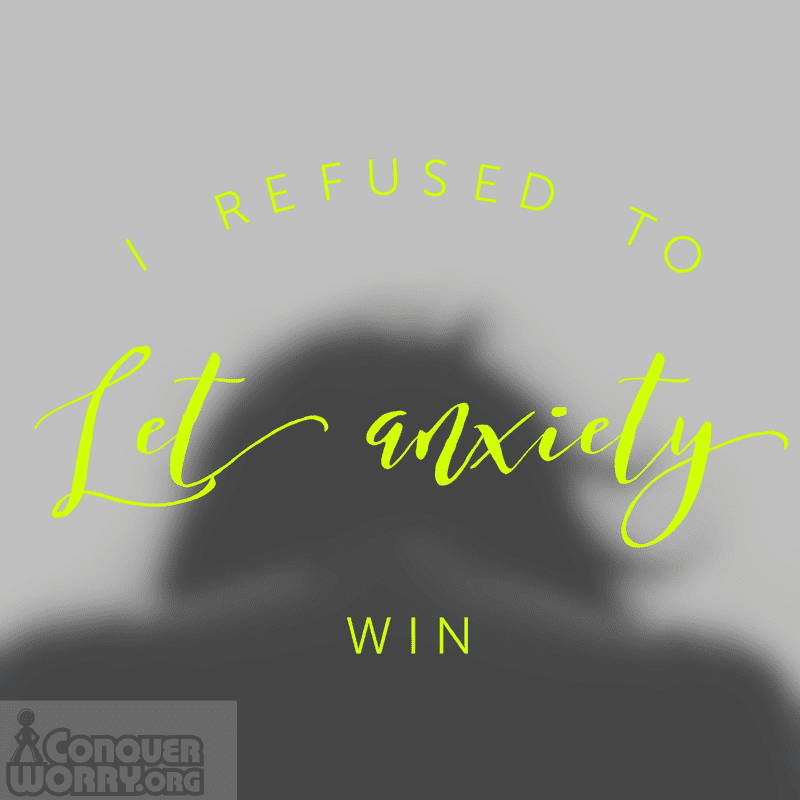





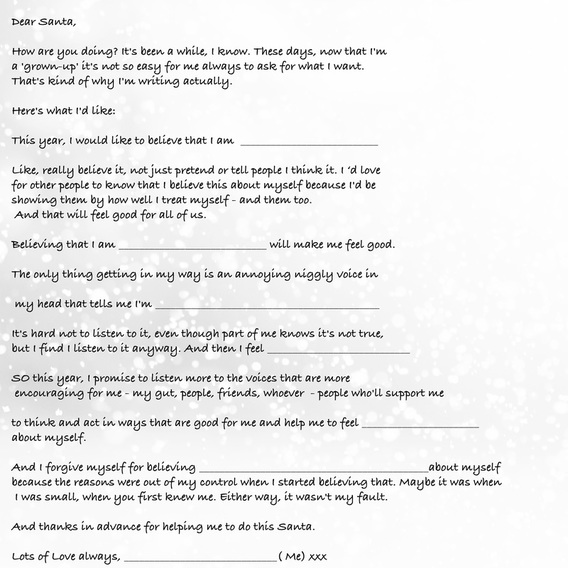





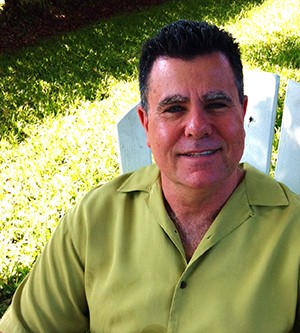
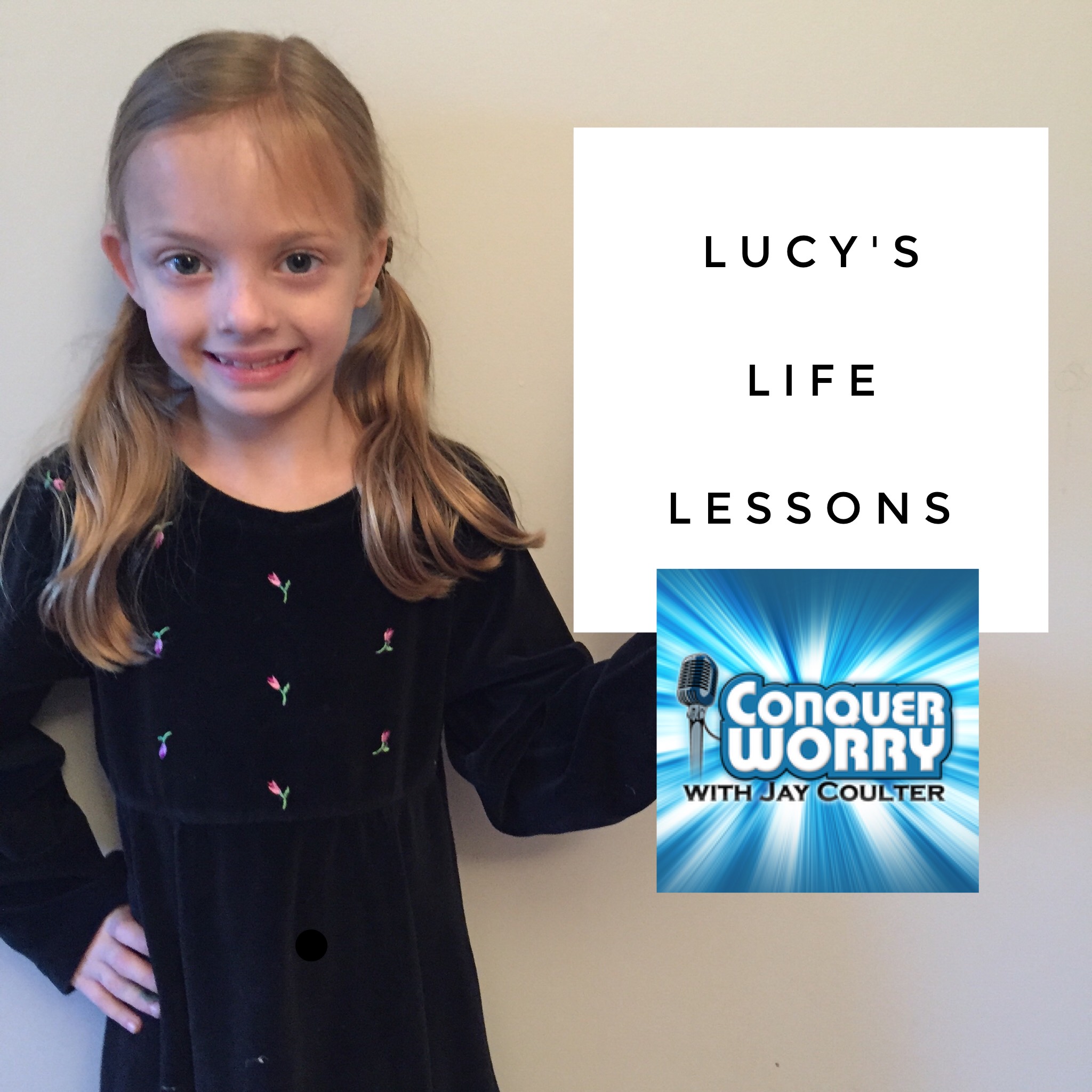
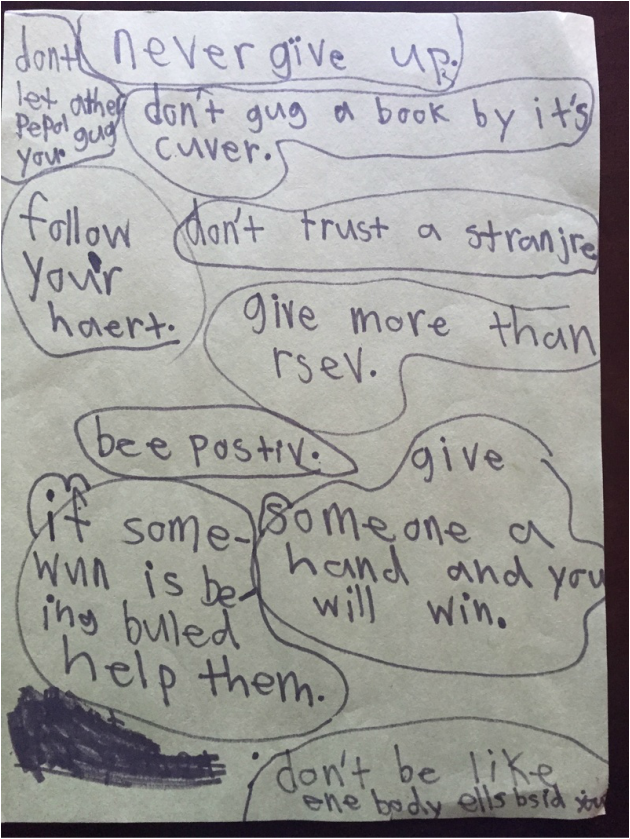
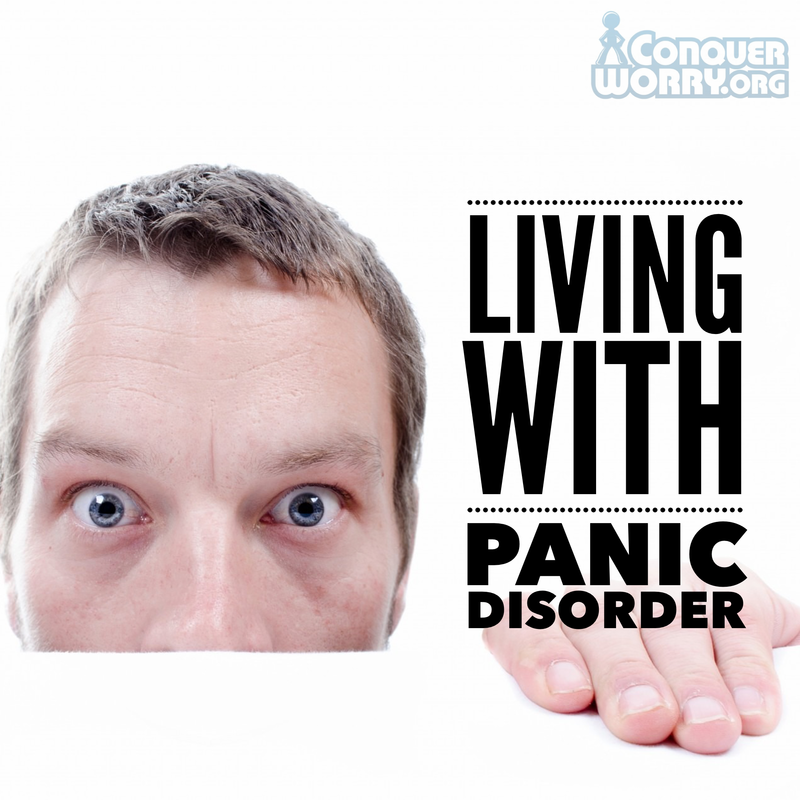


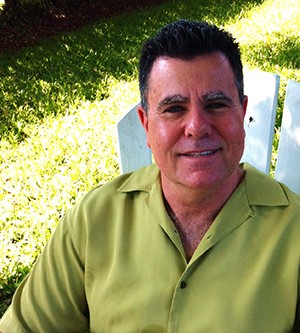
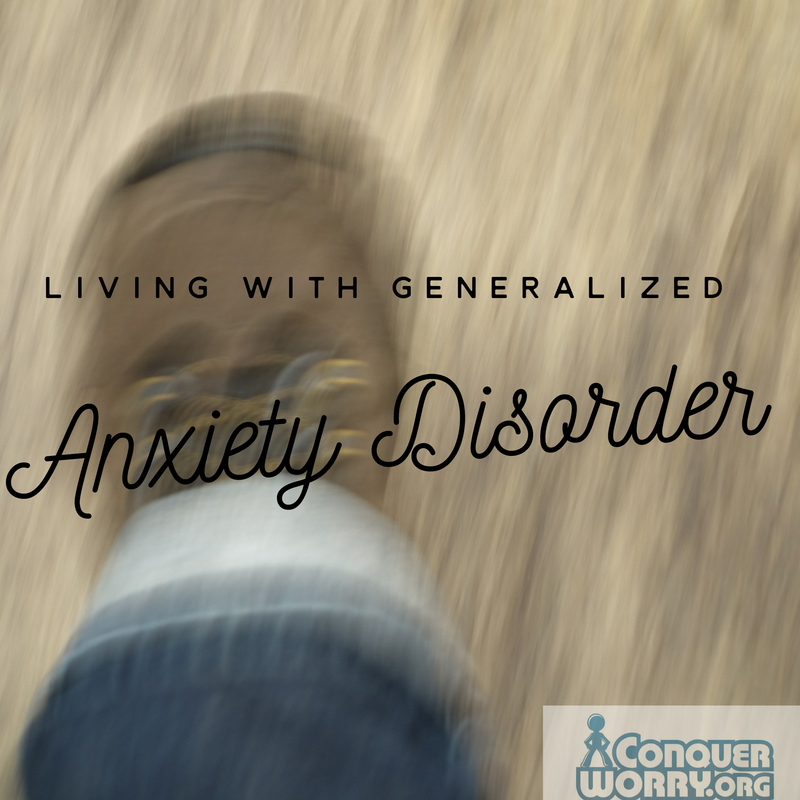


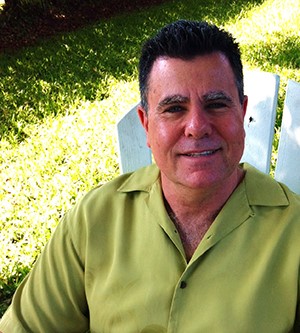
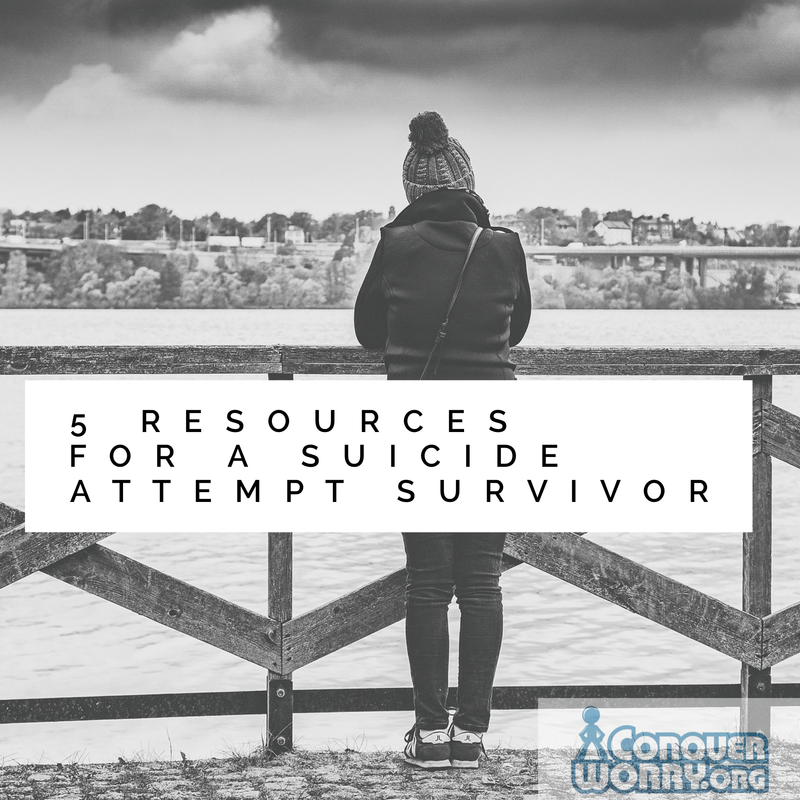





 RSS Feed
RSS Feed
